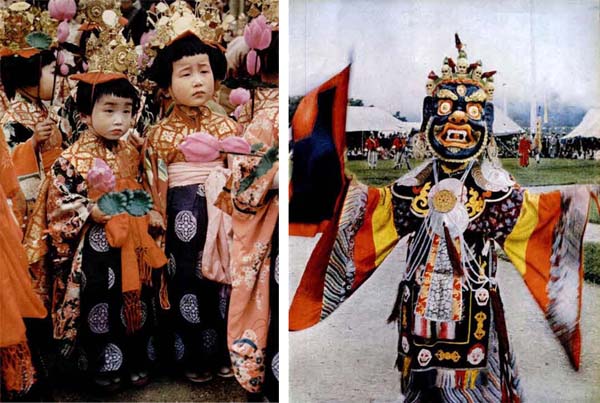Ambiences and Tendencies
 |
 |
 |
 |
 |
 |
 |
Natural Uprightness & Satanism
in Pagan Civilizations
One should not confuse a certain natural uprightness that existed in pagan cultures, even before their evangelization, with the diabolical character that infests today's neo-pagan culture. The fruits of our fallen nature can have noble and beautiful aspects like those that we see among the pagans.
On the other hand, apostasy from the true Faith has a much greater malice than that of peoples who did not know Jesus Christ. So, it is not surprising that to the degree a Catholic society transforms itself into a City of the Devil, the Devil manages to influence its art and culture.
This is not to affirm that there is a complete absence of demonic things in the pagan world. Quite to the contrary. But the Devil’s influence on that world was limited and, even if it often manifested itself in art and culture, it never managed to completely dominate them.

A striking example of this is the contrast between the two pictures on this page.
The first shows us two Japanese girls in the charm and innocence of their tender age. Their attires are most modest and give a vigorous lesson to the neo-pagan nudists on the beaches of the West. The varied colors of their dress have something poetic about them, completed by the head ornaments. They are very regional, very singular, very artistic, very dignified and proper.
*
To the contrary, in the next picture we see a monster in whose mask are reflected many of the vices – fury, lewdness, extravagance and foolishness. It makes that monster well-suited to participate in a diabolical cult: He is in fact one of the performers in the Buddhist dances in Tibet.
It is sure that the Devil penetrated Buddhism. But who, viewing the costumes of these charming children – whom it is impossible to see without having an immense desire to baptize them – could say that he dominated the whole pagan culture of Japan?

On the other hand, apostasy from the true Faith has a much greater malice than that of peoples who did not know Jesus Christ. So, it is not surprising that to the degree a Catholic society transforms itself into a City of the Devil, the Devil manages to influence its art and culture.
This is not to affirm that there is a complete absence of demonic things in the pagan world. Quite to the contrary. But the Devil’s influence on that world was limited and, even if it often manifested itself in art and culture, it never managed to completely dominate them.

A striking example of this is the contrast between the two pictures on this page.
The first shows us two Japanese girls in the charm and innocence of their tender age. Their attires are most modest and give a vigorous lesson to the neo-pagan nudists on the beaches of the West. The varied colors of their dress have something poetic about them, completed by the head ornaments. They are very regional, very singular, very artistic, very dignified and proper.
To the contrary, in the next picture we see a monster in whose mask are reflected many of the vices – fury, lewdness, extravagance and foolishness. It makes that monster well-suited to participate in a diabolical cult: He is in fact one of the performers in the Buddhist dances in Tibet.
It is sure that the Devil penetrated Buddhism. But who, viewing the costumes of these charming children – whom it is impossible to see without having an immense desire to baptize them – could say that he dominated the whole pagan culture of Japan?

Catolicismo. n. 68 April 1956
Posted on February 14, 2018
Posted on February 14, 2018
______________________
______________________








